Key takeaways:
- Transforming feedback into actionable steps is essential for growth and requires fostering a culture that values input.
- Creating a prioritization framework and establishing regular discussions helps effectively integrate feedback into the development process.
- Emotional aspects of feedback can impact decision-making; managing these emotions is crucial for successful implementation.
- Balancing quantitative data with qualitative insights enhances understanding and leads to more informed decisions.
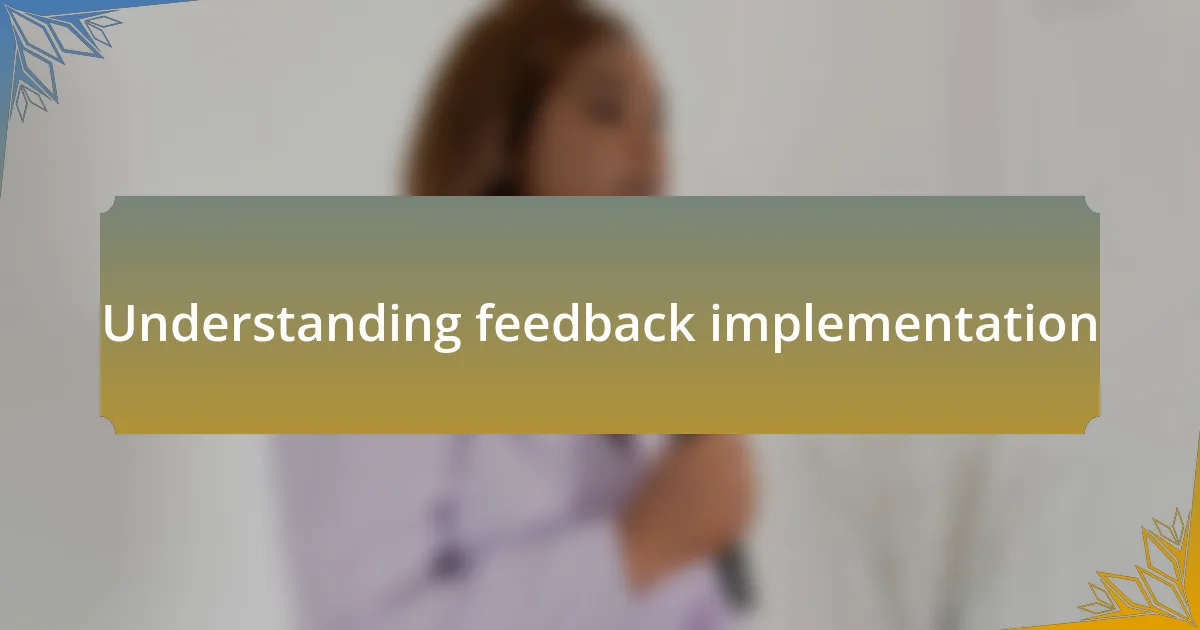
Understanding feedback implementation
Understanding feedback implementation goes beyond merely collecting opinions; it’s about transforming those insights into actionable steps. I recall a time when our team received critical feedback about our user interface. Initially, it felt daunting, but once we dissected the comments, I realized they offered a treasure trove of ideas for improvement.
Have you ever overlooked a critical piece of feedback because it felt uncomfortable? I once hesitated to address a customer’s suggestion for a new feature, thinking it was too ambitious. However, after discussing it further, we found that this feature could significantly enhance the user experience, breaking down the barriers we hadn’t even recognized before.
The real challenge lies in fostering a culture that embraces feedback as a vital element for growth. It’s easy to become defensive or dismissive, but when I consciously chose to welcome feedback, I noticed a shift not only in team dynamics but also in how responsive we became to our customers’ needs. Creating an environment where feedback is valued can truly transform a business’s journey.

Common challenges in feedback implementation
Implementing feedback can often feel like navigating a maze, especially when balancing diverse opinions. I remember a time when our team received two conflicting pieces of feedback about the same feature. On one hand, some users wanted more customization options, while others preferred simplicity. It was challenging to find a solution that met both needs without overwhelming our users or complicating the design process.
Another hurdle I’ve encountered is the lag in translating feedback into actions. I once participated in a project where we gathered extensive user insights but struggled to prioritize them within our roadmap. I found myself asking, “How can we act on feedback effectively when our resources are limited?” This situation taught me that timing and prioritization are crucial; we need to act swiftly on valuable insights before they lose relevance.
Moreover, there’s an emotional aspect to handling feedback that can’t be ignored. I’ve felt that knot in my stomach when facing negative reviews, which can almost paralyze decision-making. But I’ve also learned that those feelings often stem from wanting to protect our work. By reframing feedback as a chance for growth rather than a personal critique, I’ve found it easier to engage with input constructively, promoting a healthier dialogue around improvement.
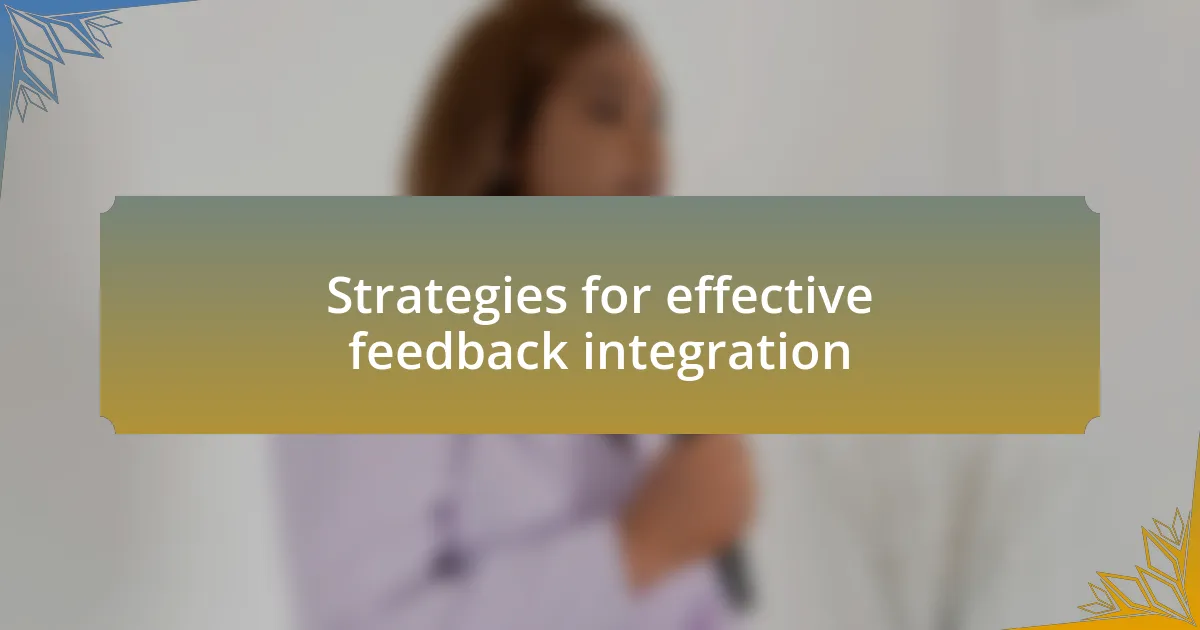
Strategies for effective feedback integration
One strategy I’ve found effective is creating a prioritization framework that helps us sift through various feedback types. For instance, during a recent product cycle, I developed a matrix that categorized feedback based on urgency and impact. This not only clarified which insights needed immediate attention but also fostered a sense of shared ownership among the team as we collectively determined priorities.
Another approach is to establish regular touchpoints for discussing feedback. I recall setting up bi-weekly meetings specifically dedicated to reviewing and reflecting on user insights. This constant engagement created an atmosphere where feedback became part of our culture rather than an afterthought. It prompted everyone to think critically and talk openly about how we could adapt our product in response to real user needs. Isn’t it fascinating how consistent dialogue can transform the way we perceive and act on feedback?
Lastly, I’ve experienced the transformative power of transparency with stakeholders regarding feedback processes. There was a project where we decided to openly share not only the feedback we received but also our actions—or inactions—regarding that feedback. This honesty built trust and encouraged more users to voice their thoughts. After all, isn’t it vital to show our audience that their opinions genuinely drive our decisions? By actively engaging with our users this way, we not only improved our product but also strengthened our community.
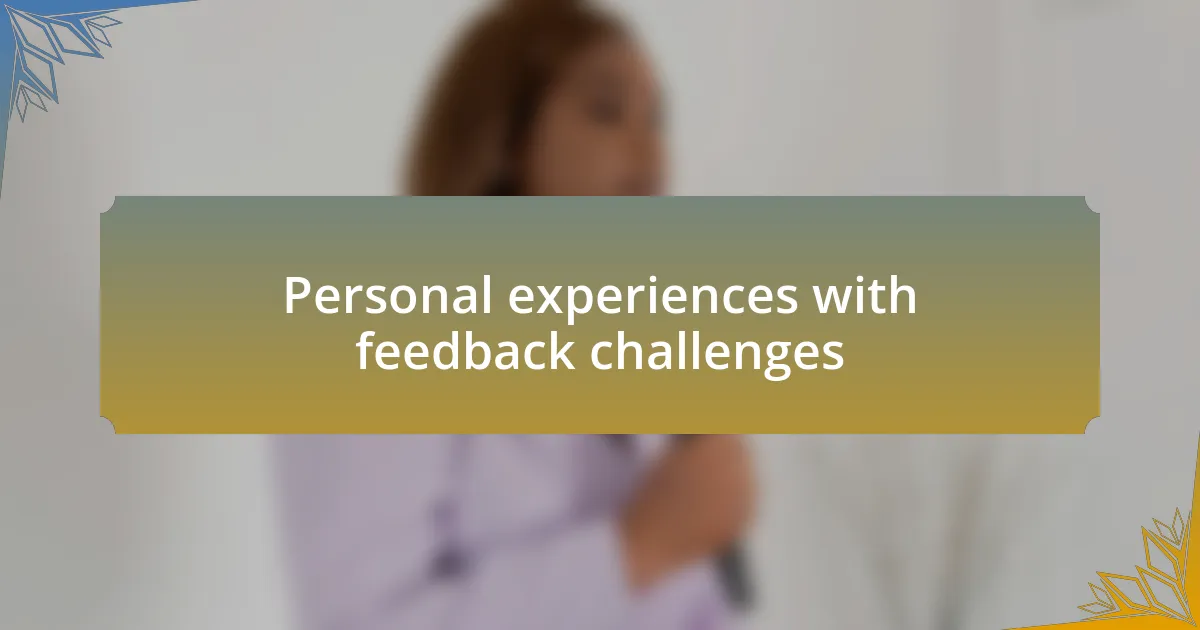
Personal experiences with feedback challenges
I vividly remember a time when we received a slew of feedback after a major product launch. Many responses were conflicting, leaving us perplexed about which direction to take. It felt overwhelming, almost like trying to navigate a stormy sea without a compass. In moments like these, I’ve learned the importance of pausing to breathe and evaluating the feedback calmly, instead of rushing into decisions that might not serve our users well.
One instance that stands out to me is when I failed to adequately document user feedback in a structured way. It became a frustrating scavenger hunt for the insights we’d gathered over months. Reflecting on that experience, I realized how essential it is to have a systematic approach to capture and categorize feedback. If I had a clear method in place, perhaps we wouldn’t have missed critical patterns that later impacted our roadmap. Have you ever faced a similar situation where disorganization wasted valuable insights?
Another challenge arose when differing opinions within the team made it tough to agree on the best course of action. I can recall heated discussions that felt more like a tug-of-war than constructive dialogue. It was exhausting, and I often wondered why we struggled to unify around a shared vision. This taught me the value of fostering an inclusive environment where every voice is heard, allowing us to synthesize different perspectives into a holistic plan. How do we balance diverse opinions while still moving forward effectively?
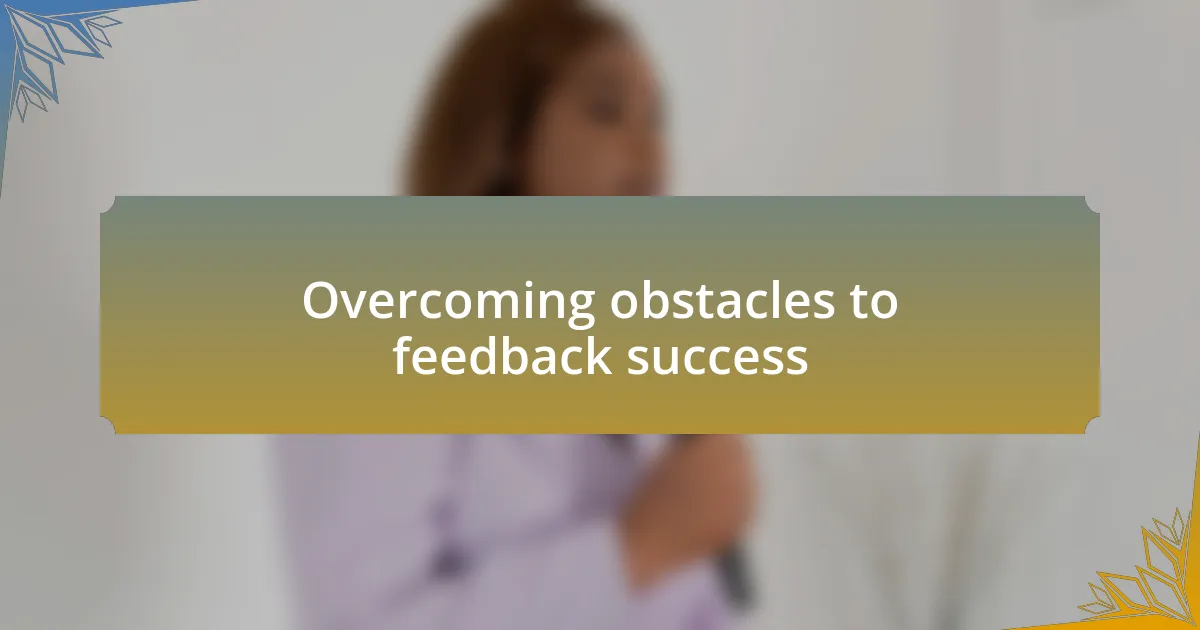
Overcoming obstacles to feedback success
Navigating the maze of feedback isn’t just about collecting opinions; it often feels like confronting a wall of resistance. I recall a time when I received critical feedback on a feature I believed was well-executed. Instead of dismissing it, I took a step back, put myself in the users’ shoes, and tried to understand their perspective. This empathetic approach not only helped me refine that feature but also fostered a culture where team members felt safe voicing constructive criticisms. Have you ever experienced that moment where you realized the value of seeing things through someone else’s eyes?
Another roadblock I encountered was the fear of change. After integrating user feedback, the changes resulted in unexpected pushback from internal stakeholders who were accustomed to the old ways. I found it necessary to communicate the reasons behind each adjustment clearly and involve them in the process, reassuring them that we were not deviating from our overall vision. This transformation from resistance to openness was enlightening and reinforced the idea that successful feedback implementation relies heavily on transparency and trust. How might fostering this kind of openness influence your team’s adaptability?
Sometimes, it’s the timing of feedback that poses a challenge. I remember when we received valuable insights just as a major project was concluding. The urge to implement those suggestions immediately clashed with our existing timelines. It taught me to prioritize and schedule feedback discussions earlier in the process as a standard practice, allowing for smoother transitions and avoiding the chaos of last-minute changes. Have you ever felt the frustration of trying to fit feedback into a tightly packed timeline?
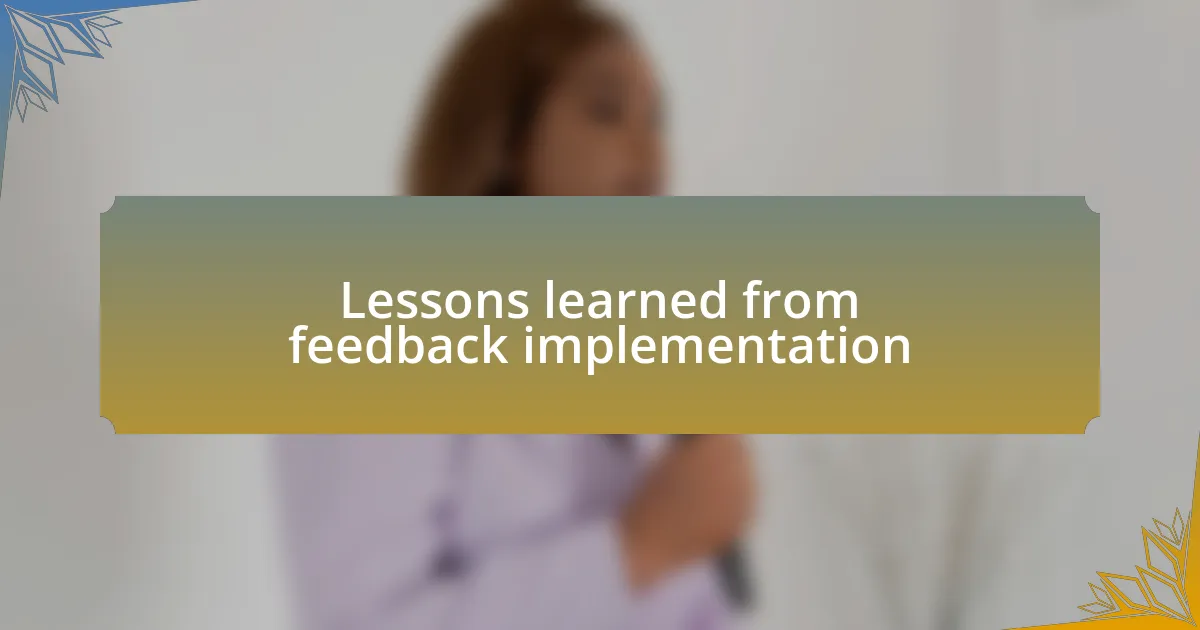
Lessons learned from feedback implementation
It’s fascinating how lessons learned from feedback implementation can reshape our approaches. One time, I decided to host a brainstorming session after receiving customer insights that contradicted our initial assumptions. By creating a relaxed environment where everyone could freely express their ideas, I was surprised to see how even the most resistant team members began to share their thoughts. This experience taught me that collaborative discussions can uncover innovative solutions, transforming feedback into actionable strategies. How often do we forget to tap into the collective intelligence of our teams?
Another important realization came when I over-relied on quantitative data from surveys. While these metrics provided valuable insights, I learned that raw numbers alone don’t tell the whole story. I recall a situation where our satisfaction ratings improved, yet users continued to express dissatisfaction in comments. Diving deeper into qualitative feedback revealed underlying issues we hadn’t anticipated. This experience emphasized the need to balance data with personal narratives, helping us see the bigger picture without getting lost in statistics.
One of the most poignant lessons was recognizing the emotional impact of feedback—both for myself and my colleagues. After implementing a significant change based on customer suggestions, I was met with a mix of enthusiasm and apprehension from the team. It reminded me that feedback implementation isn’t just a technical adjustment; it’s also about managing emotions and building morale. Have you noticed how a simple acknowledgment of the team’s effort can energize everyone during transitions? Engaging with the emotional side of feedback can pave the way for smoother implementation and a more resilient team.